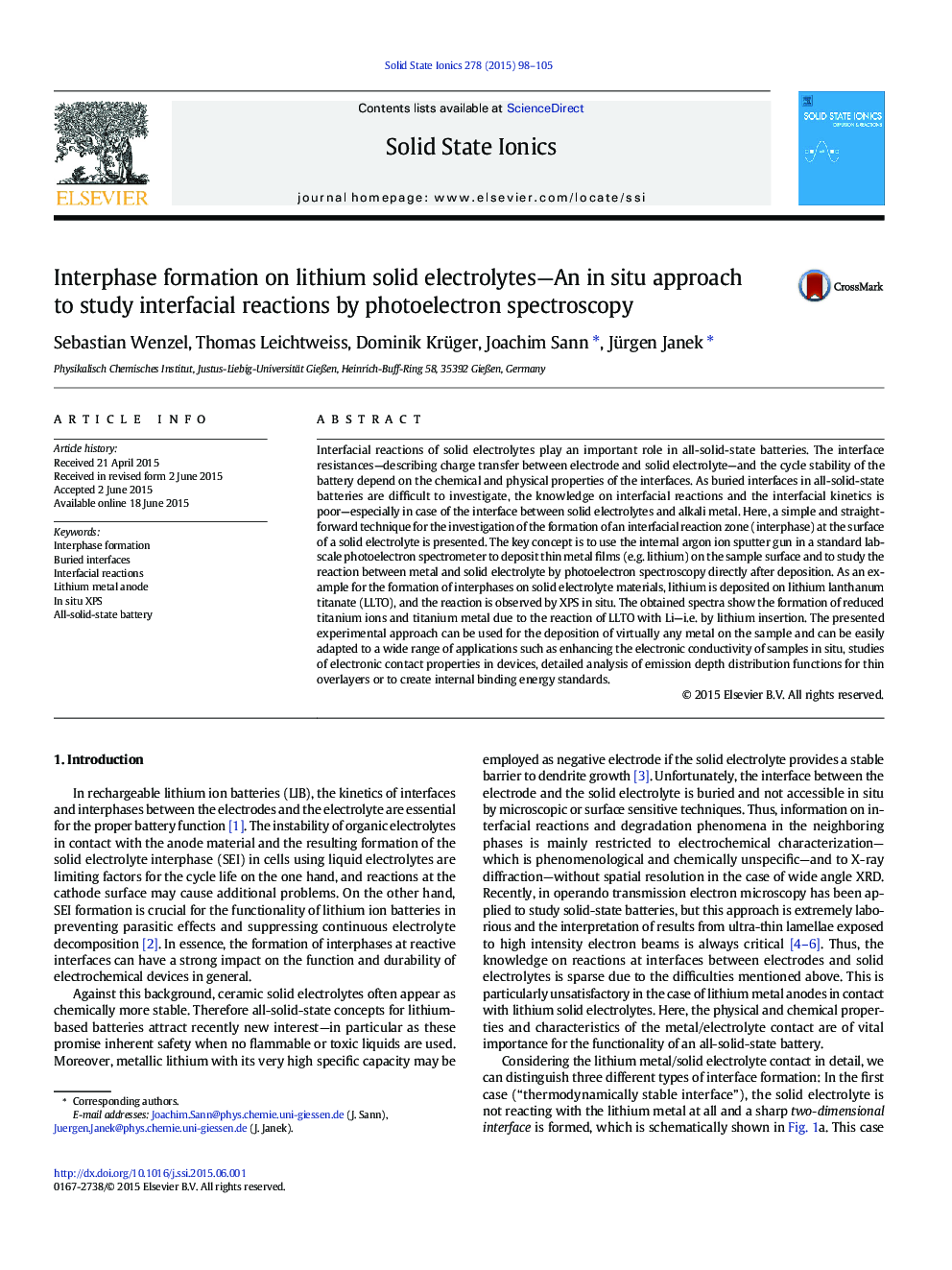| کد مقاله | کد نشریه | سال انتشار | مقاله انگلیسی | نسخه تمام متن |
|---|---|---|---|---|
| 1295702 | 1498265 | 2015 | 8 صفحه PDF | دانلود رایگان |
• We present a simple technique for in situ metallization in a standard photoelectron spectrometer equipped with an ion gun.
• Using this technique, the stability of lithium ion conductors in contact with lithium metal is investigated.
• In case of Li0.35La0.55TiO3 in contact with lithium metal the formation of titanium metal on the surface is observed.
Interfacial reactions of solid electrolytes play an important role in all-solid-state batteries. The interface resistances—describing charge transfer between electrode and solid electrolyte—and the cycle stability of the battery depend on the chemical and physical properties of the interfaces. As buried interfaces in all-solid-state batteries are difficult to investigate, the knowledge on interfacial reactions and the interfacial kinetics is poor—especially in case of the interface between solid electrolytes and alkali metal. Here, a simple and straightforward technique for the investigation of the formation of an interfacial reaction zone (interphase) at the surface of a solid electrolyte is presented. The key concept is to use the internal argon ion sputter gun in a standard lab-scale photoelectron spectrometer to deposit thin metal films (e.g. lithium) on the sample surface and to study the reaction between metal and solid electrolyte by photoelectron spectroscopy directly after deposition. As an example for the formation of interphases on solid electrolyte materials, lithium is deposited on lithium lanthanum titanate (LLTO), and the reaction is observed by XPS in situ. The obtained spectra show the formation of reduced titanium ions and titanium metal due to the reaction of LLTO with Li—i.e. by lithium insertion. The presented experimental approach can be used for the deposition of virtually any metal on the sample and can be easily adapted to a wide range of applications such as enhancing the electronic conductivity of samples in situ, studies of electronic contact properties in devices, detailed analysis of emission depth distribution functions for thin overlayers or to create internal binding energy standards.
Journal: Solid State Ionics - Volume 278, 1 October 2015, Pages 98–105
